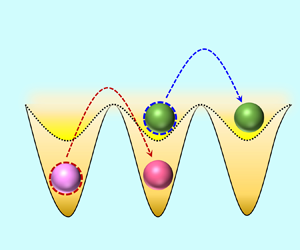Article contents
Molecular kinetic modelling of nanoscale slip flow using a continuum approach
Published online by Cambridge University Press: 23 March 2022
Abstract

One major challenge for a continuum model to describe nanoscale confined fluid flows is the lack of a boundary condition that can capture molecular-scale slip behaviours. In this work, we propose a molecular-kinetic boundary condition to model the fluid–surface and fluid–fluid molecular interactions using the Lennard–Jones type potentials, and add a mean-field force to the momentum equation. This new boundary condition is then applied to investigate the nanoscale Couette and Poiseuille flows using the generalised hydrodynamic model developed by Guo et al. (Phys. Fluids, volume 18, issue 6, 2006a, 067107). The accuracy of our model is validated by molecular dynamics simulations and other models for a broad range of parameters including density, shear rate, wettability and channel width. Our simulation results reveal some unexpected and unintuitive slip behaviours at the nanoscale, including the epitaxial layering structure of fluids and the slip length minimum. The slip length minimum, which is analogous to the Knudsen minimum, can be explained by competing fluid–solid and fluid–fluid molecular interactions as density varies. A new scaling law is proposed for the slip length to account for not only the competing effect between the fluid–solid and fluid–fluid molecular interactions, but also many other physical mechanisms including the competition between the fluid internal potential energy and kinetic energy, and the confinement effect. While the slip length is nearly constant at the low shear rates, it increases rapidly at the high shear rates due to friction reduction. These molecular-scale slip behaviours are caused by energy corrugations at the fluid–solid interface where strong fluid–solid and fluid–fluid molecular interactions interplay.
JFM classification
- Type
- JFM Papers
- Information
- Copyright
- © The Author(s), 2022. Published by Cambridge University Press
References
REFERENCES
- 12
- Cited by



